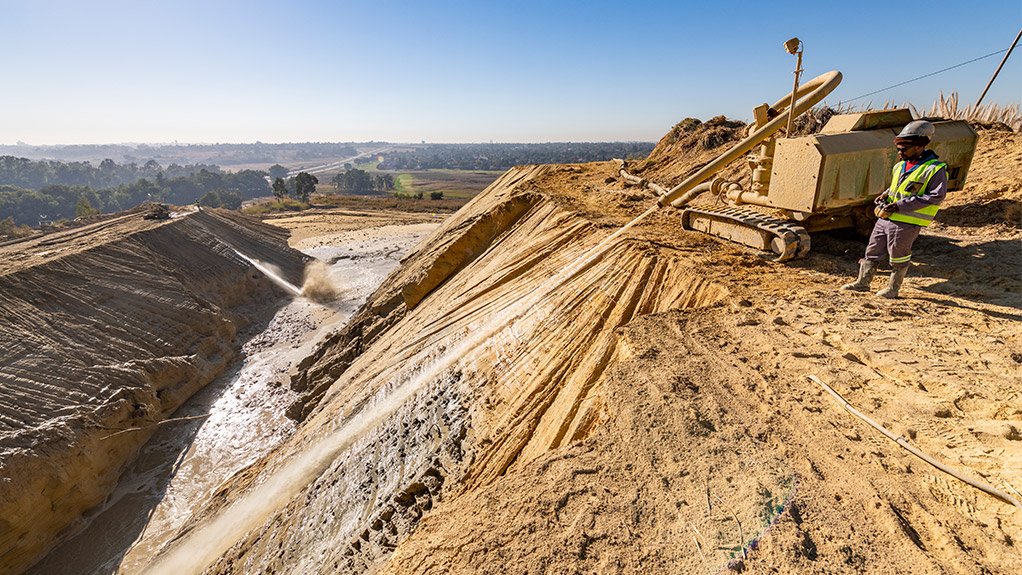South Africa’s overly prescriptive, unbalanced and onerous environmental policy framework runs the risk of making the mining industry “uninvestable”, says Dr Anthea Jeffery, policy research head at think-tank the Institute of Race Relations.
“South Africa’s environmental regulations compare badly with those in many other countries.”
She argues that the country must revise its many and complex environmental regulations if it is to attain effective environmental protection while encouraging a level of growth in mining that is capable of boosting economic and social progress.
Jeffery emphasises that, with unemployment rates continually increasing, the country cannot afford to implement poor environmental policies that stunt growth in the mining sector and discourage future investment.
Although environmental regulations are essential, owing to the environmental damage caused by mining, she notes that “every environmental rule is accompanied with compliance costs, both direct or indirect”.
Jeffery tells Mining Weekly that exorbitant compliance costs are further compounded by the country’s unusually high input costs, which are making local mining houses globally uncompetitive. This not only threatens the survival of South Africa’s already struggling local miners but is also deterring future investment in mining.
“While State-imposed environmental constraints that affect mining adversely are numerous, the industry ought to be particularly concerned about the introduction of the heavily contested Financial Provisioning (FP) Regulations that have been adopted under the National Environmental Management Act (Nema) and are supposed to take effect in February next year.”
In a departure from global environmental rules and standards, Nema provides that every holder of a mining right “remains responsible for any environmental liability, pollution or ecological degradation . . . notwithstanding the issuing of a closure certificate” by the Mining Minister.
This means that mining companies are expected to take on permanent environmental liability for impacts that cannot be predicted and which may come to light only decades after mining operations have ended, adds Jeffery.
“The latent impacts for which mining companies are now liable in perpetuity include the pumping and treatment of extraneous and polluted water. Yet, it is often difficult to tell whether the pollution of a river, for example, stems solely from a closed mine.”
The 2015 FP Regulations, which were gazetted by the then Environmental Affairs Minister Edna Molewa on November 20, 2015, were initially due to take effect in February 2017. However, implementation was postponed to February 2019 as objections mounted and proposed amendments were put forward.
According to the 2015 regulations, the financial provision that miners must match will be the “actual cost of implementation” for current, closure and post-closure rehabilitation “for at least ten years going forward”.
However, Jeffery holds that this policy is still far too onerous on mines. Mining companies in South Africa are concerned about the pending regulations, citing the financial strain they will put on them.
“Mines have consistently objected that they would have to set aside money for ten years, and yet still meet annual rehabilitation costs out of operating income. Often, it would be very difficult, if not impossible, for them to do both,” emphasises Jeffery. She adds that the additional compliance cost burden that this regulation will place on miners is unnecessary and would be near unachievable, particularly for new mines.
The amendments to the FP Regulations that were proposed in 2017 reduce the financial provision required, stating that this must cover closure and post-closure costs “for . . . three years” looking forward. According to the proposals, the annual rehabilitation costs need no longer be included, and must instead be covered as part of normal operating costs.
The 2017 proposals largely concur with the 2015 regulations in specifying the information that must be included in annual rehabilitation plans, final rehabilitation and closure plans, and the environmental risk report that identifies latent environmental impacts that could come to light following closure.
“The level of detail required of mining companies – in addition to their . . . extensive monitoring and reporting obligations under Nema – is extraordinary,” exclaims Jeffery.
Mining companies are already obliged to submit detailed annual reports on their progress in implementing their environmental management programmes. Instead of adding unnecessarily to their reporting burden, a more flexible compliance approach is needed, she declares. South Africa should move away from overly prescriptive policies, and instead adopt more goal-setting regulations. These would give mining houses more flexibility as to how best they can comply with key environmental objectives, Jeffery suggests.
Allowing mines this freedom will ensure that environmental regulations do not become so detailed that they continually require redrafting as environmental risks and risk mitigation technologies develop. This approach will also encourage mines to reduce their compliance costs by developing methods of handling their waste products more efficiently, she holds.
Mining companies that are helping to deal with legacy issues – for example, by countering acid mine drainage and other pollution from abandoned mines and tailings dams – could also be recognised and encouraged to do more through appropriate tax credits, Jeffery concludes.
Edited by: Zandile Mavuso
Creamer Media Senior Deputy Editor: Features
EMAIL THIS ARTICLE SAVE THIS ARTICLE
ARTICLE ENQUIRY
To subscribe email subscriptions@creamermedia.co.za or click here
To advertise email advertising@creamermedia.co.za or click here














